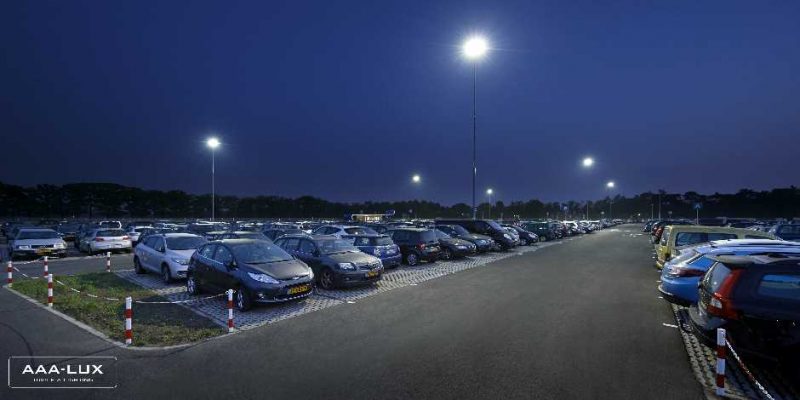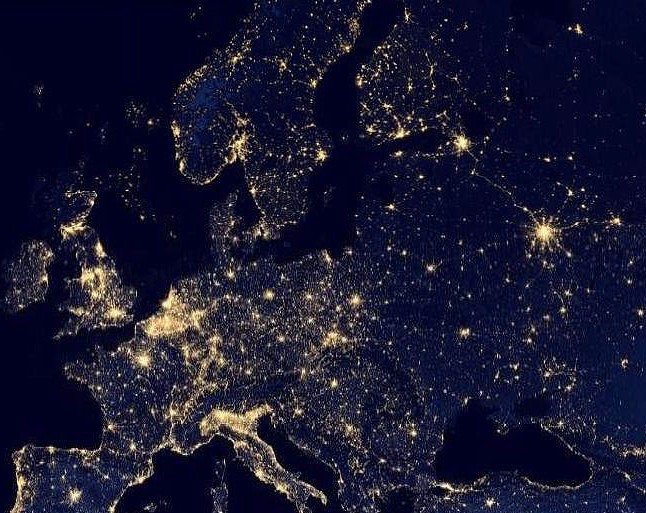 Everyone who flew on a plane over the big cities at night saw what a beautiful view is below – the sea of light! And if you look at a picture of Europe or the USA made from space, the picture will be even more impressive. Millions of street lights make our nightlife more comfortable, more saturated and safer. Night illumination of cities enables people not to limit themselves only to the bright time of day, as it was in the last century. We get more of the most valuable resource – time! In addition, thanks to good night illumination of streets, it is more comfortable and safer to travel around the city, which
Everyone who flew on a plane over the big cities at night saw what a beautiful view is below – the sea of light! And if you look at a picture of Europe or the USA made from space, the picture will be even more impressive. Millions of street lights make our nightlife more comfortable, more saturated and safer. Night illumination of cities enables people not to limit themselves only to the bright time of day, as it was in the last century. We get more of the most valuable resource – time! In addition, thanks to good night illumination of streets, it is more comfortable and safer to travel around the city, whichimproves the life of a modern person.
How it all began
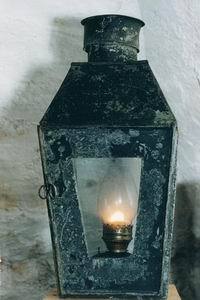 For the first time, the city lighting system appeared in the 17th century in Amsterdam, on the initiative of Jan van der Heyden, who was primarily known as the organizer of the city fire protection. In 1668 he proposed to install street lights so that at night the townspeople would not fall into canals (the embankments of the majority of canals with which this city is famous for have no handrails), to combat crime and to facilitate the extinguishing of fires (as with artificial light it was easier to coordinate actions of firefighters).
For the first time, the city lighting system appeared in the 17th century in Amsterdam, on the initiative of Jan van der Heyden, who was primarily known as the organizer of the city fire protection. In 1668 he proposed to install street lights so that at night the townspeople would not fall into canals (the embankments of the majority of canals with which this city is famous for have no handrails), to combat crime and to facilitate the extinguishing of fires (as with artificial light it was easier to coordinate actions of firefighters).A useful innovation was soon introduced by other cities, and then by countries. Since then, the city lighting system has forever entered the urban infrastructure and now life is impossible to imagine the life of any locality without it.
Evolution
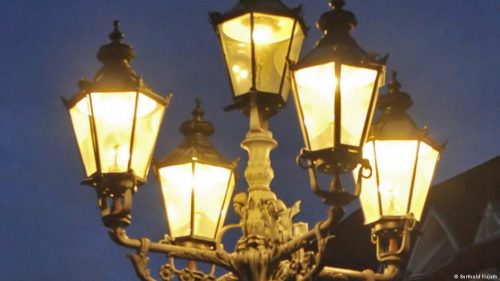 The first luminaries were oily, then they were replaced by gas luminaries, but only electric luminaries made city lighting truly bright and massive. The design of electric luminaries also changed many times: from incandescent lamps and mercury-arc discharge lamps (MDL) to sodium-vapor lamps (HPS), which have the highest light intensity, with good economics and low price.
The first luminaries were oily, then they were replaced by gas luminaries, but only electric luminaries made city lighting truly bright and massive. The design of electric luminaries also changed many times: from incandescent lamps and mercury-arc discharge lamps (MDL) to sodium-vapor lamps (HPS), which have the highest light intensity, with good economics and low price. 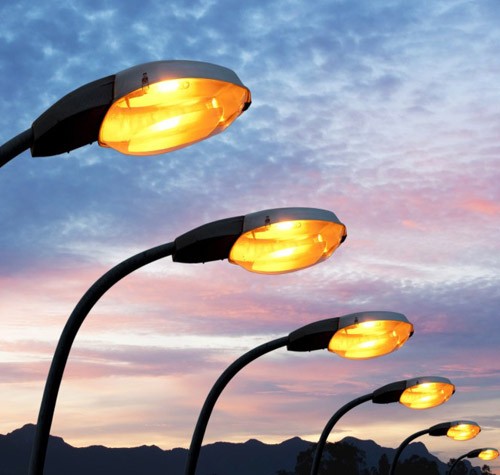 That is why they cover the streets of our cities in most cases. If oil and gas luminaries were installed only in squares and large streets, then electric, due to their relative cheapness, simplicity of installation and reliable construction, which did not require constant attention, allowed illuminating the secondary streets. Their use has become so massive that now they even cover yards and parking lots. The number of luminaries in the modern city is estimated at tens of thousands. This fact, together with comfort and convenience, brought a problem: the energy consumption of the modern city has increased significantly. And although sodium-vapor lamps, which in most cases are used for lighting, are quite economical, nevertheless, the share of electricity costs in the budget of the city is quite high.
That is why they cover the streets of our cities in most cases. If oil and gas luminaries were installed only in squares and large streets, then electric, due to their relative cheapness, simplicity of installation and reliable construction, which did not require constant attention, allowed illuminating the secondary streets. Their use has become so massive that now they even cover yards and parking lots. The number of luminaries in the modern city is estimated at tens of thousands. This fact, together with comfort and convenience, brought a problem: the energy consumption of the modern city has increased significantly. And although sodium-vapor lamps, which in most cases are used for lighting, are quite economical, nevertheless, the share of electricity costs in the budget of the city is quite high.Modernity
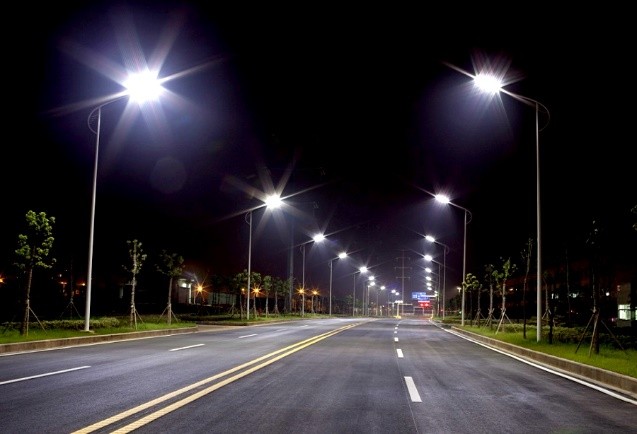 With the invention of a white-light-emitting LED, the evolution of the lamps went to the next stage. After all, LED luminaries have a whole spectrum of the advantages compared to classic sodium-vapor lamps. It includes a more pleasant, natural color of the glow from which the eyes do not get tired of and color perception is not disturbed, higher mechanical strength, fast turn-on time, much longer life, quick inclusion at low temperatures and higher energy efficiency. The latter fact has both an economic and a social role: reducing urban energy costs leads to a reduction in CO2 emissions – the problem is very important and relevant to the modern world.
With the invention of a white-light-emitting LED, the evolution of the lamps went to the next stage. After all, LED luminaries have a whole spectrum of the advantages compared to classic sodium-vapor lamps. It includes a more pleasant, natural color of the glow from which the eyes do not get tired of and color perception is not disturbed, higher mechanical strength, fast turn-on time, much longer life, quick inclusion at low temperatures and higher energy efficiency. The latter fact has both an economic and a social role: reducing urban energy costs leads to a reduction in CO2 emissions – the problem is very important and relevant to the modern world.A little bit of Mathematics
Let’s calculate the benefits of using LED lighting. For example, the parking of a large shopping center is illuminated by 120 lamps. If these are HPS lamps (sodium-vapor, orange glow), then, given their power of 400W, we get hourly power consumption:
0,4 kW x 120 pcs = 48 kW/per day.
Lighting, on average, works 9 hours a day. We get electricity consumption per day:
48 kW/h x 9 h = 432 kW/per day.
And for the whole year:
432 kW/h x 365 days = 157680 kW.
If the cost of electricity is about 0.1E per 1 kW, the annual electricity consumption will be:
0.1 EURO x 157680 kW = 15768 EURO per year.
If you illuminate the same parking with LED lights with the same light intensity, then you can use lamps with a power of only 100W (against 400 for old-style lamps). We get daily power consumption:
0,1 kW x 120 pcs x 9 hours = 108 kW/per day.
Accordingly, the annual electricity consumption:
108 kW/per day x 365 days = 39420 kW.
Monetary equivalent will be:
39420 kW x 0.1 EURO = 3942 EURO/per year.
This is 4 times less, compared with the HPS lamps! In other words, only the transition to the use of street LED luminaries for such parking will save:
15768 EURO – 3942 EURO = 11826 EURO each year.
And this is the price of a brand-new car!
And what else does LED lighting do?
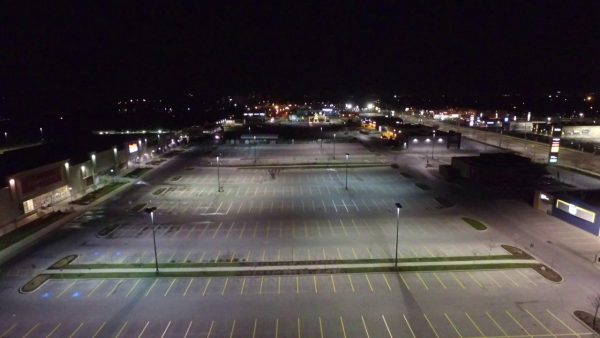 LED lighting provides another great advantage – the possibility of dimming. Dimming is a change in the brightness of the glow. Moreover, LED lamps allow this to be done in very wide ranges: a change in their brightness is allowed from 10% to 100% of the nominal.
LED lighting provides another great advantage – the possibility of dimming. Dimming is a change in the brightness of the glow. Moreover, LED lamps allow this to be done in very wide ranges: a change in their brightness is allowed from 10% to 100% of the nominal.This function detects the wide possibilities of creating systems for intelligent light control and more economical use of electricity, especially in supermarket and shopping center parking lots, yard, service and secondary areas where high level of lighting is not required throughout the dark time of the day. After all, for example, in parking lots of supermarkets, the main activity of buyers and staff falls on the evening hours. So, what’s the point of lighting up this territory in full force in the midnight? The same can be said about service passes and thoroughfares, where activity is always small or cyclical.
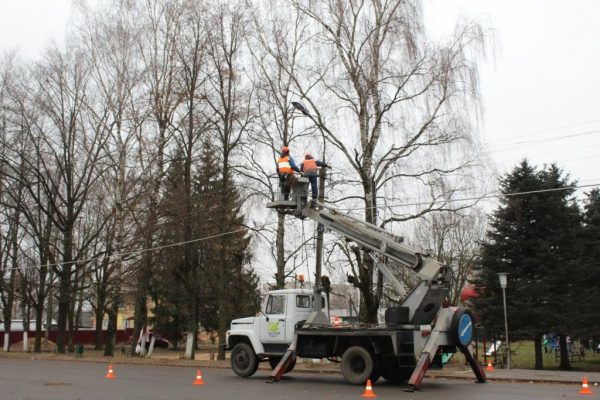
Using light control systems based on dimmable street lights can save another 40% of electricity, i.e. 3942 EURO x 40% = 1577 EURO. The total cost savings for electricity will be:
11826 EURO + 1577 EURO = 13402 EURO.
But this is not all the advantages of Smart LED lighting!
Sodium-vapor lamps have a short lifetime of about 2 years. By the end of the first year of service there is a “burnout” and the light flux is decreasing. And by the end of the second year the lamp either burns out or shines so dimly that its use becomes completely unprofitable. So, although the cost of the lamp itself is low, the cost of work to replace it is really high. You must rent a lift and the replacement can only be done by skilled personnel who are allowed to work at altitude. The lifetime of the LED luminaries is at least 10 years and does not require any intervention. And when dimmable street lamps are used, the lifetime is increased up to 2 times, because during operation with reduced brightness, the LEDs operate in a gentle mode, which prolongs the life of the LEDs. It turns out that during the operation of the LED luminaries, the sodium-vapor lamp will have to be replaced at least 5 times, and with a replacement cost of at least 30 EURO, it will cost an additional 150 EURO for 10 years.
Resume
Sodium-vapor lamp HPS has served humanity for a long time, making the cities bright, comfortable and safe. But the progress does not stand still and HPS lamps are replaced by a new light source – LED with a smart control system that gives such advantages as:
- bright, even lighting with a favorable color temperature and excellent color reproduction;
- energy saving both due to greater energy efficiency and to the efficient use of the luminous flux based on the intelligent control system;
- long lifetime, thanks to a fundamentally new design of the light source and a gentle mode of operation that the control system provides;
- usability: the sodium-vapor lamp requires 10 to 15 minutes to enter the operating mode, and at negative temperatures it may not start at all. Besides, there may be problems with restarting the lamp if it was switched off. LED lamps are deprived of all these drawbacks: they are switched on multilaterally and independently of the ambient temperature;
- a reduction in electricity consumption entails a decrease in the emission of carbon dioxide into the atmosphere, which is very important for the modern world. A company that pays attention to this issue shows its social responsibility and creates a positive image among its current and potential customers.
Of course, currently LED luminaries are more expensive than sodium-vapor ones, but LEDs have great potential for saving money and a short pay back of 1.5 – 2 years of operation.
Fortunately, more and more companies are realizing these benefits and started using intelligent lighting control systems for outdoor LED luminaries. Because if they continue to use old-style HPS lamps, they would simply burn their money.
